Note: for the full suite of measurements from the SoundStage! Audio-Electronics Lab, click this link.
The Cyrus i9-XR integrated amplifier-DAC looks quite similar to the Cyrus III integrated amplifier I owned almost three decades ago. But under the hood, the i9-XR has a high-quality internal DAC and Cyrus Audio’s latest class-AB amplification circuitry. It’s certified as Roon Tested and has many other useful features, so is a very different and thoroughly modern piece of audio equipment.
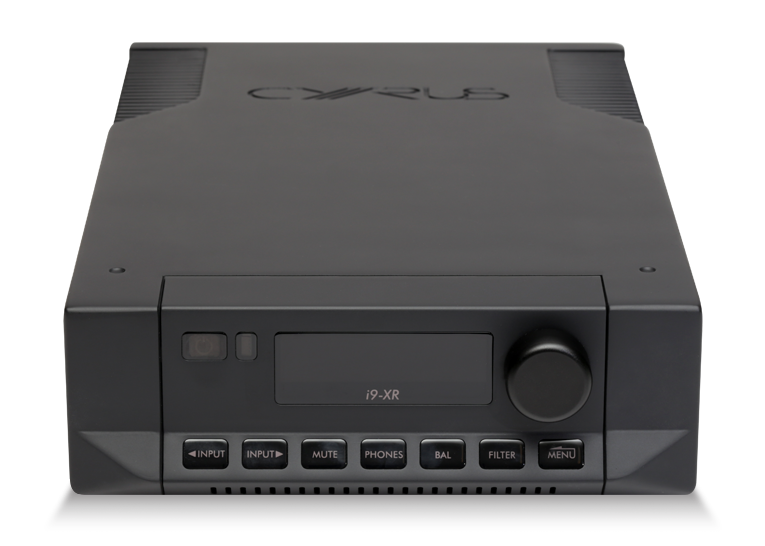
Priced at $4499 (all prices in USD), the i9-XR is part of the company’s top-of-the-line XR series and is the most advanced and expensive integrated amplifier-DAC in its extensive range of product offerings. And while Cyrus uses an excellent-sounding, proprietary class-D amplifier topology in products such as the Stereo 200 power amplifier I previously reviewed, the i9-XR has a more traditional class-AB design. Based on my positive experience with the Stereo 200 and my fond memories of the Cyrus III, I was eager to hear what Cyrus could bring to the highly competitive market for premium integrated amplifier-DACs with the top-of-the line i9-XR.
Description
The i9-XR is rated at a healthy 91Wpc into 6 ohms. Cyrus does not specify the output with the more common loads of 8 or 4 ohms, but the headphone output is listed as 138mWpc into 16 ohms (<0.1% THD) for the 3.5mm jack located on the back of the unit. The power amplification circuitry is said to benefit from an overspecified power supply, and uses Schottky diodes rather than more traditional bridge rectifiers for higher efficiency; it is claimed to have a flat frequency response from DC to 100kHz and beyond. The preamplifier section is derived from Cyrus’s Pre-XR analog preamp; it uses relays for input switching and has short signal paths to reduce noise.
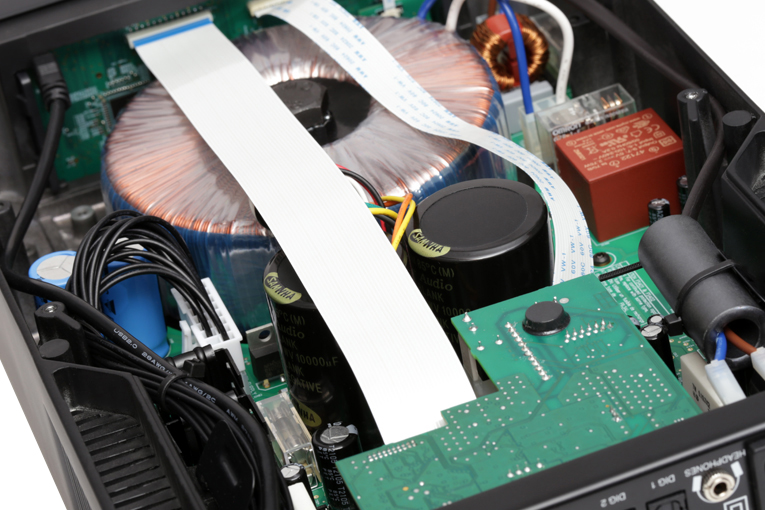
The DAC section employs the company’s second-generation QXR DAC board with an ESS Technology ES9028Q2M DAC chip. The board is used in many of its other products, including the CDi-XR CD player I reviewed on this site in July 2022. The QXR DAC is also designed to have short signal paths and low noise. It supports PCM data up to 24-bit/192kHz through S/PDIF and 32/384 PCM and DSD256 via USB. There are seven digital filter options, which can be accessed through the i9-XR’s menu system. The MM phono section is said to be derived from the design of Cyrus’s standalone Phono Signature phono preamp.
While I am pleased that Cyrus included a headphone output, it’s a little awkward to have it on the back panel. And that back panel is packed with inputs and outputs. There are two sets of BFA (British Federation of Audio) speaker outputs, arranged on the far left and far right of the panel. This is a very sensible location for the outputs, especially considering the density of the other connections toward the center of the panel. BFA connectors are compatible with rolled banana plugs, my preferred speaker connector, and are used by cable manufacturers such as Analysis Plus, Nordost, and Clarus Cable.
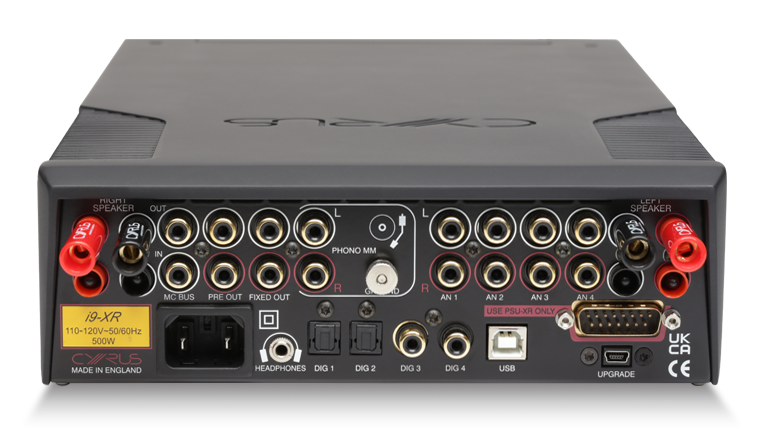
Between the speaker outputs is a bank of RCA connectors: four sets of analog inputs, a pair of MM phono inputs with ground, a preamp output, a fixed output, and a pair of MC-BUS outputs for connection to compatible Cyrus components. Below the analog connections are the headphone output, two optical (TosLink) inputs, two coaxial (RCA) digital inputs, and an asynchronous USB-B audio input. A USB Mini-B connection is provided for firmware updates, and in addition to a standard IEC power inlet there’s a multipin PSU-XR connection for upgrading to the optional power supply.
The i9-XR utilizes the same cast-aluminum, half-width chassis as most Cyrus components. In fact, from a distance it is hard to distinguish from the company’s CDi-XR CD player, and, as I mentioned, not that different from the Cyrus III I owned almost 30 years ago. The aluminum chassis is nicely finished in matte black paint, with the Cyrus logo embossed on the top. Heatsink fins are integrated into the side panels near the back. The chassis definitely has a solid feel, and the build is claimed to reduce unwanted vibration and provide shielding from electrical interference and magnetic fields. The compact unit measures only 3″H × 8.5″W × 14″D and weighs about 13 pounds.
The lower portion of the front panel has a row of capacitive-touch control buttons and is angled upward to allow for easier access. There are buttons to cycle input, mute the amp, select headphone output, adjust the balance, select the digital filter, and call up the menus. Above the control buttons is a centrally located LCD display, with a volume control knob to the right. On the left is the IR remote sensor and a power standby button, which glows red for standby and turns white when in operation. The lettering on the reflective control buttons is a little difficult to read, but they will likely not see much use as a very serviceable learning remote, the iR14, is provided. Although the many buttons on the backlit remote are also somewhat difficult to differentiate, they are of decent size and have a positive feel.
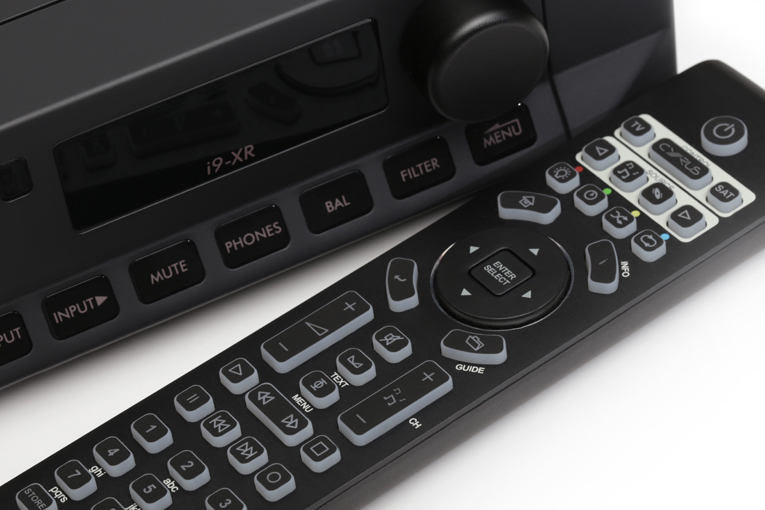
The LCD panel can be configured as a black-on-white or white-on-black display, and the contrast and brightness can be adjusted. A plethora of useful information is displayed, such as the data type and sampling frequency, but as with the displays of many compact audio components, the panel is relatively small and difficult to read from across the room. The menu system allows adjustment of the aforementioned display options and many other settings: balance, sensitivity of the capacitive touch buttons, manual or auto selection of the headphone output, maximum volume for speakers and headphones, volume offset for each input, language, input names (chosen from a list), and selection of one of the seven digital filters.
Setup
I set up the i9-XR in my main system by connecting it to my MartinLogan ESL 9 hybrid electrostatic loudspeakers and Intel NUC computer running Windows 10 and Roon, with Tidal as the primary source. I also used a Pro-Ject X1 turntable with Ortofon Pick it S2 MM cartridge, the Cyrus CDi-XR CD player, and an Oppo Digital UDP-205 4K Ultra HD universal Blu-ray player as sources. Accessories consisted of cables from Analysis Plus, Clarus, Nordost, AudioQuest, Pro-Ject, and ESP, and power conditioning from Zero Surge and Blue Circle Audio.
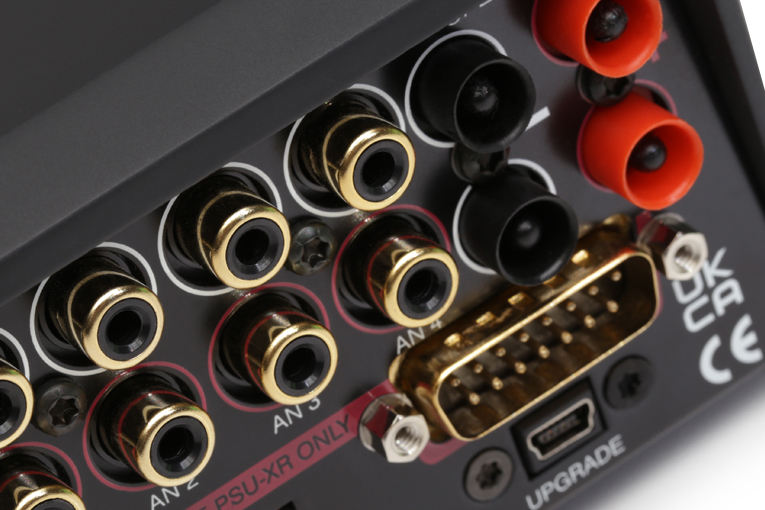
As I’ve heard with other DACs offering digital filters, I found little if any difference in sound quality between the filter options provided with the i9-XR. I left it set to the default Apodizing filter for most of the time. I also did not use the balance control, volume input offsets, or any of the other options available through the menu system, leaving them all at their factory default settings.
The sound
I first listened to Peter Gabriel’s So (DSD64, Real World Records / Virgin), which is not the most detailed recording ever, but Gabriel’s voice and David Rhodes’s backing vocals were not obscured at all by the dense, complex mix of percussion and synthesizers on “Red Rain.” The delicate, wind-like synth notes and Tony Levin’s luscious bass line emerged smoothly from a dark quietness at the beginning of “Don’t Give Up,” and the vocals of Gabriel and Kate Bush had an arresting clarity. When the piano bursts through the somber tone at the 2:50 mark, it introduces a more upbeat tempo, but the effect is tempered by the introspective vocals and the languid timing and rock-steady rhythm of Levin’s bass. The i9-XR masterfully communicated all of the differing textures and moods of the recording, and that carried through to all of the songs on the album.
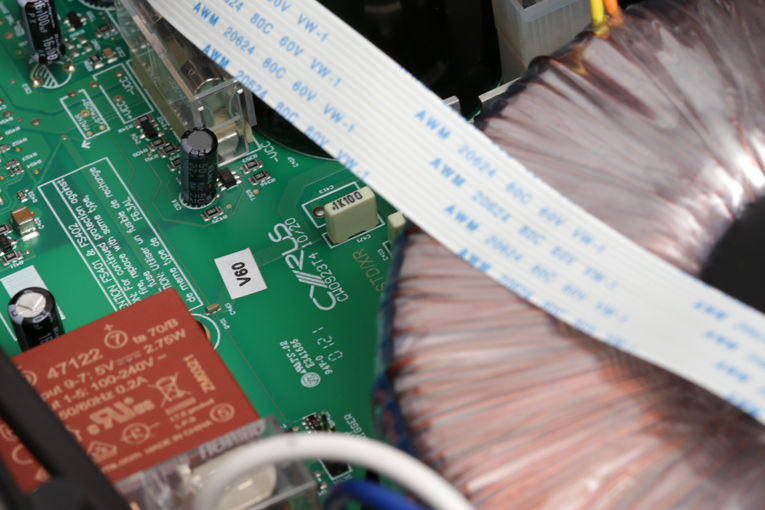
Switching to vinyl, I again listened to So (LP, Real World Records / Caroline International 884108004548), and was surprised at the quiet background and detailed sound of the i9-XR’s phono section. “Don’t Give Up” sounded nearly as noiseless and refreshingly clean as it did with the file ripped from the SACD. In fact, the vocals on “Red Rain” even seemed to emerge a little further out from the dense instrumentation with the half-speed-mastered LP. Although the vocals on “Don’t Give Up” exhibited a touch more sibilance, the bass had an even richer and more inviting texture, yet gave up little in the way of articulation.
Continuing with more LPs, I cued up Bruce Springsteen’s Tunnel of Love (LP, Columbia Records 88985460131). The title track of this pressing has some pronounced sibilance when he sings, “Fat man sssitting on a little ssstool takesss the money from my hand, while his eyes take a walk all over you”; but the i9-XR mostly tamed it without robbing the song of its dynamics. The cacophony of percussion at the beginning of the song, including the fleeting sound of a bicycle bell, remained crisply intact, and Patti Scialfa’s voice was set back ever so slightly from the main vocals. The silence of the circuitry was also demonstrated on “Two Faces.” The track opens with just Springsteen on vocals and acoustic guitar, providing a stark and involving presentation that was enhanced by the noiseless quality of the amp.
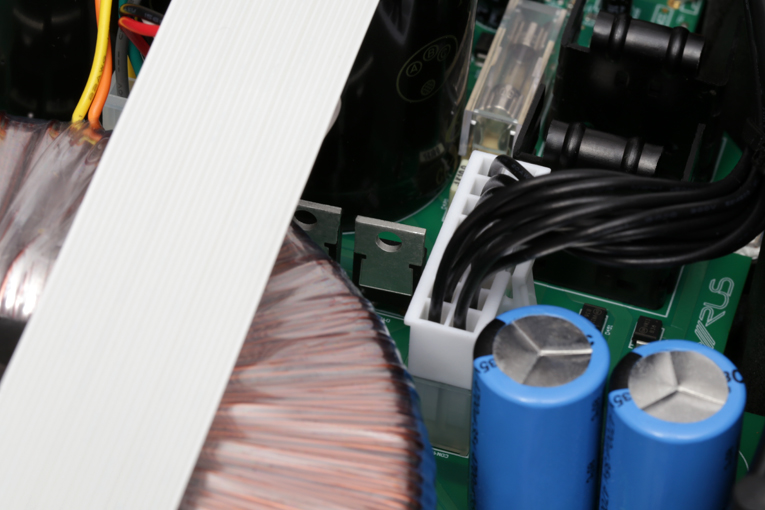
As much as I enjoyed listening to the i9-XR when playing back vinyl, its strengths really came into focus when listening to high-quality digital tracks. Madonna’s 16-track remix compilation, Finally Enough Love (24-bit/44.1kHz FLAC, Warner Records / Tidal), is an interesting selection of remixes and well worth a listen as we wait for the release of the full 50-track version of the album later this year. “Like a Prayer (7″ Remix Edit)” starts off with the palpable a cappella opening verse mixed with the more diffuse, angelic sound of the backup singers. The song quickly changes gear to an ominously deep and measured electronic drumbeat that the Cyrus played back with authority. On top of the concussive beat, Madonna’s speaking voice popped eerily in and out of the soundstage at various locations with pinpoint specificity. As she launches into the faster, more uplifting tone of the next verse, the Cyrus reproduced an exceptionally clear and full-bodied electric-bass line with an exceptional sense of pace and control.
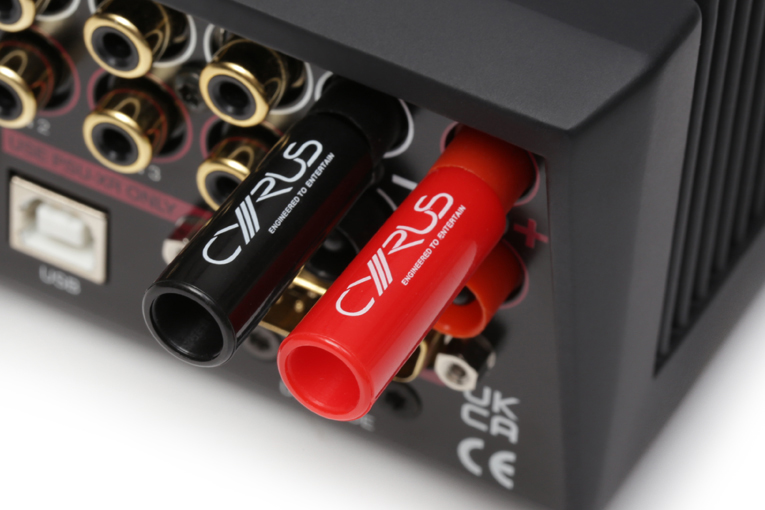
Deutsche Grammophon’s new recordings in Dolby Atmos on Blu-ray are some of my favorite recent orchestral recordings, but they also sound excellent in stereo. With John Williams: The Berlin Concert (24/192 FLAC, Deutsche Grammophon), the opening horns on “Raiders March” had a crystal-clear, soaring quality, and the timpani exhibited extreme differentiation with each beat. Not only did each drum have a different tonal quality, but I could sense differences in the weight of each strike of the mallets. The string sections were perfectly carved out in space, spread widely between the speakers; and combined with the precise placement of the winds and percussion, the i9-XR created a large, well-defined aural portrait of the entire orchestra. The soundstage wasn’t as expansive as it was with the Atmos version of the album through my home-theater system, but the i9-XR did an excellent job of playing back this detailed, high-resolution stereo recording.
Comparison
At $3000, the Hegel H120 costs considerably less than the i9-XR, but it has long been my reference integrated amplifier-DAC; I decided to put its familiar sound up against the Cyrus. On “Superman March” from The Berlin Concert, the Hegel did a good job of separating out the percussion and reproducing the many layers of the orchestra. Granted, the opening drum roll was a little tighter with the Cyrus, but the Hegel provided good weight to the timpani while maintaining most of the tonality I had heard with the i9-XR. The orchestra was constrained to a bubble within the border of the speakers with the Hegel, while the Cyrus presented a larger, more coherent soundstage; the sound stretched more evenly from the floor to well above the speakers and horizontally beyond them.
The headphone output of the i9-XR may be placed awkwardly on the back of the unit, but I greatly enjoyed using it with my HiFiMan HE400se ’phones. The transparent, yet solid sound bettered even that of the Oppo UDP-205, my reference for a headphone output built into a component. I usually listen to Sting’s “Desert Rose” from the deluxe version of My Songs (24/44.1 FLAC, A&M Records / Interscope Records / Qobuz) to judge the quality of headphones and headphone outputs. With the Cyrus, Cheb Mami’s backing vocals emerged more clearly from the mix so that they were almost as prominent as Sting’s voice. With the Oppo, the sound was still weighty and satisfying, but the vocals sounded closer together and less distinct from the instrumentation.
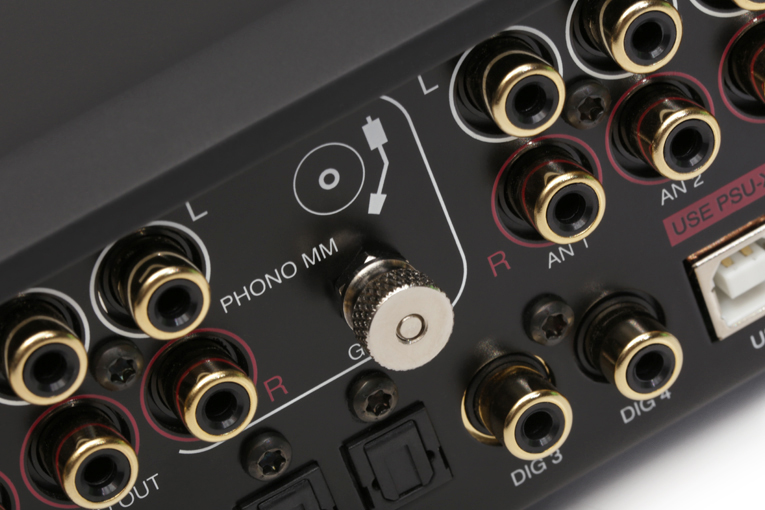
The phono stage of the i9-XR was also very good. Like the digital section, it provided a clean and quiet presentation as satisfying as anything I’ve heard in this price range. It’s not as precise as that of the Technics SU-R1000 ($9499) or as smooth as that of the Yamaha A-S3200 ($7999.95), but those amplifiers cost considerably more. And while those amps may be better at playing back vinyl, the i9-XR has few weaknesses, if any, and is a great all-round performer.
Conclusion
Cyrus’s premium integrated amplifier-DAC, the i9-XR, features a very capable and flexible DAC section, Roon certification, and a great-sounding MM phono stage and headphone output. It does lack network streaming functionality and a room-correction system, but if those features are not deal-breakers, you will find it to be a well-appointed and solidly built amplifier with a clean and unfettered sound.
. . . Roger Kanno
rogerk@soundstagenetwork.com
Note: for the full suite of measurements from the SoundStage! Audio-Electronics Lab, click this link.
Associated Equipment
- Speakers: MartinLogan Masterpiece Classic ESL 9.
- Headphones: HiFiMan HE400se.
- Integrated amplifier-DAC: Hegel H120.
- Digital sources: Intel NUC computer running Windows 10, Roon, and Tidal; AudioQuest JitterBug jitter reducer, Oppo Digital UDP-205 4K Ultra HD universal BD player, Cyrus CDi-XR CD player.
- Turntable: Pro-Ject Audio Systems X1 with Ortofon Pick it S2 cartridge.
- Speaker cables: Clarus Aqua Mark II.
- RCA interconnects: Nordost Quattro Fil, Pro-Ject Connect it E phono cable.
- USB link: AudioQuest Carbon.
- Power cords: Clarus Cable Aqua, Essential Sound Products MusicCord-Pro ES.
- Power conditioners: Blue Circle Audio PLC Thingee FX-2 with X0e low-frequency filter module, Zero Surge 1MOD15WI.
Cyrus Audio i9-XR Integrated Amplifier-DAC
Price: $4499.
Warranty: Three years (varies by distributor outside the UK).
Cyrus Audio Ltd.
Ermine Business Park
Huntingdon PE29 6XY
United Kingdom
Website: www.cyrusaudio.com






















